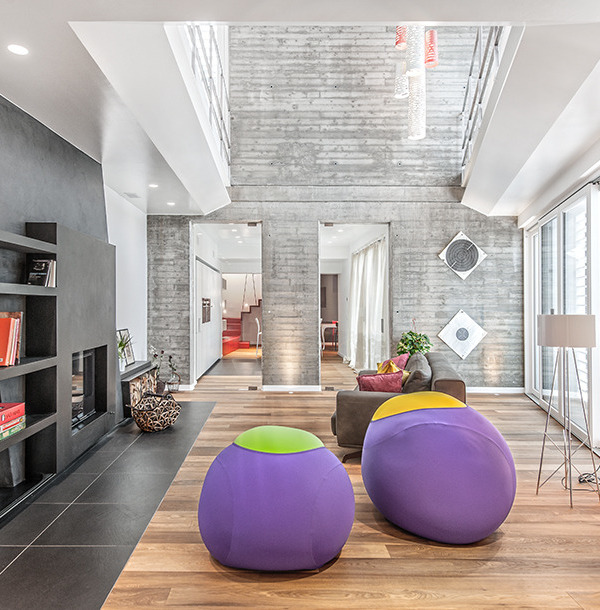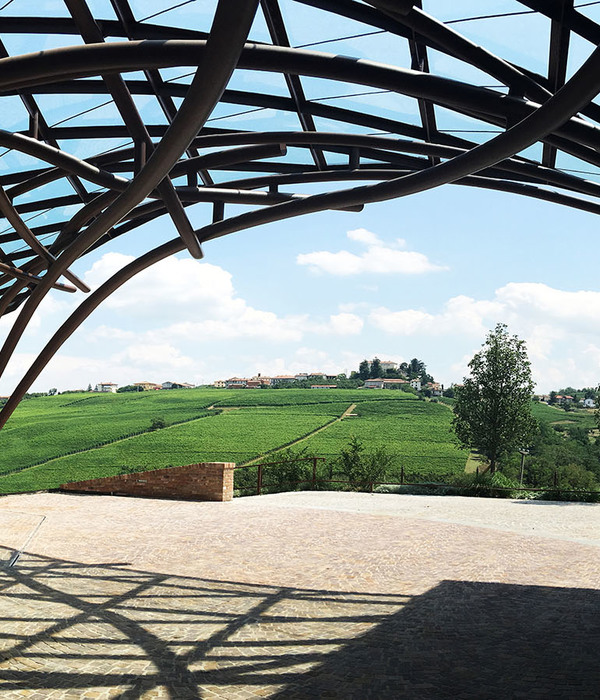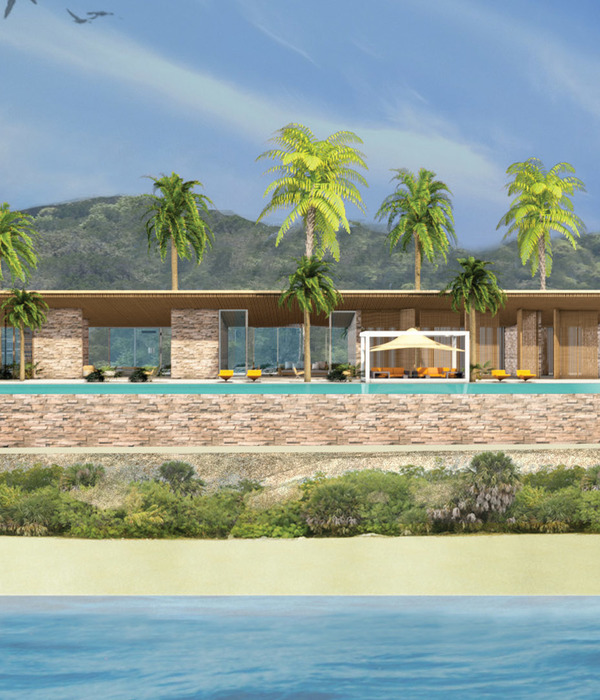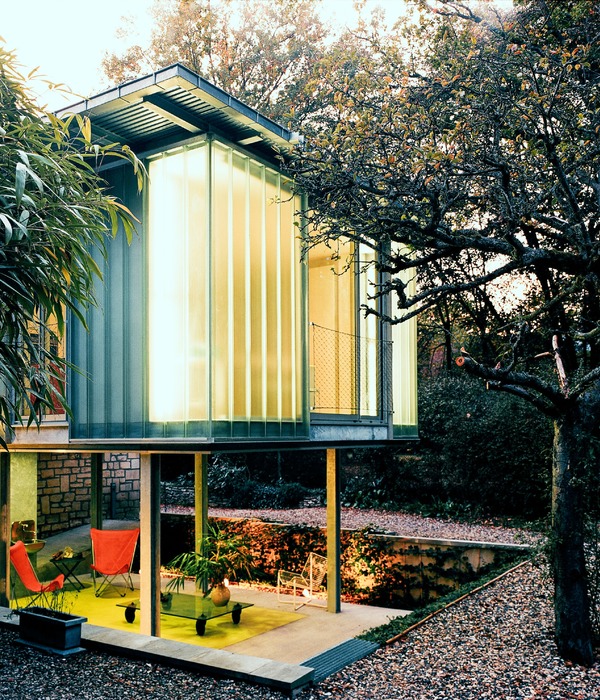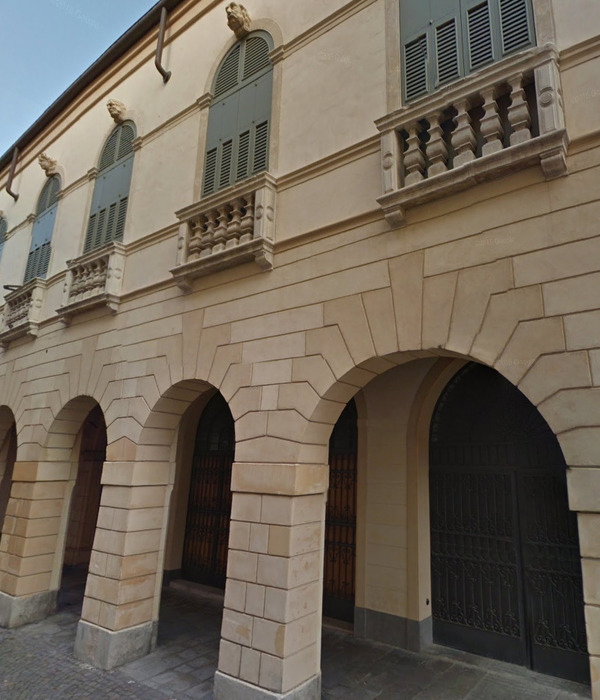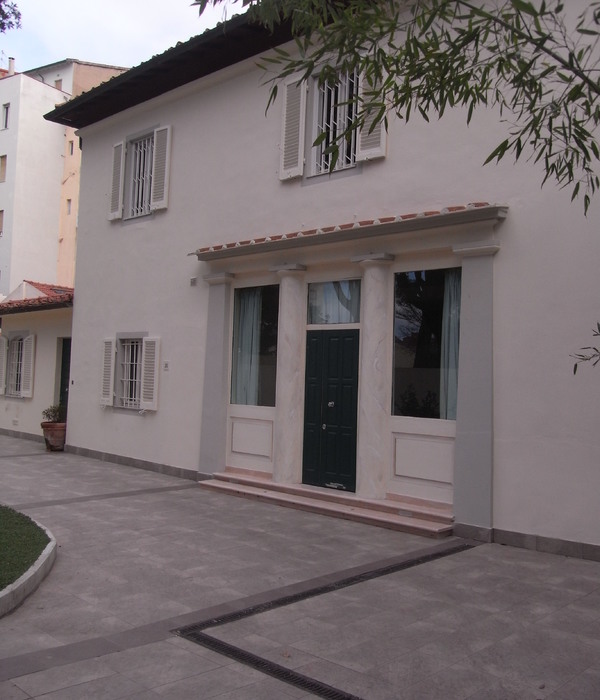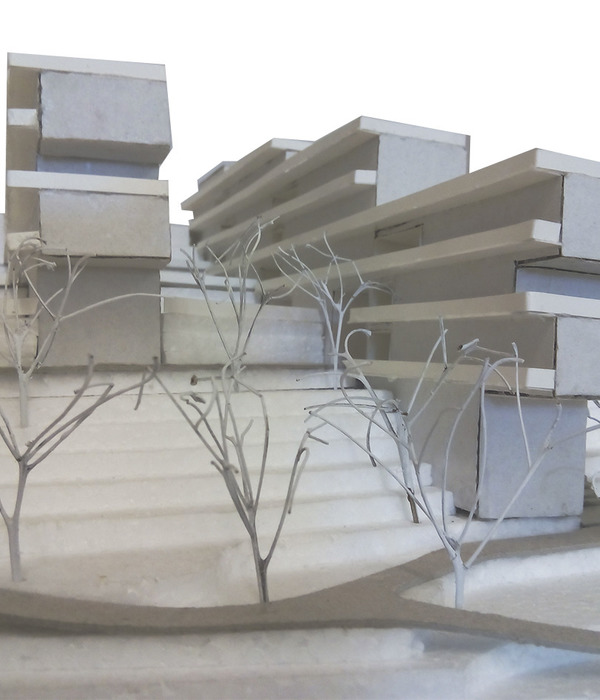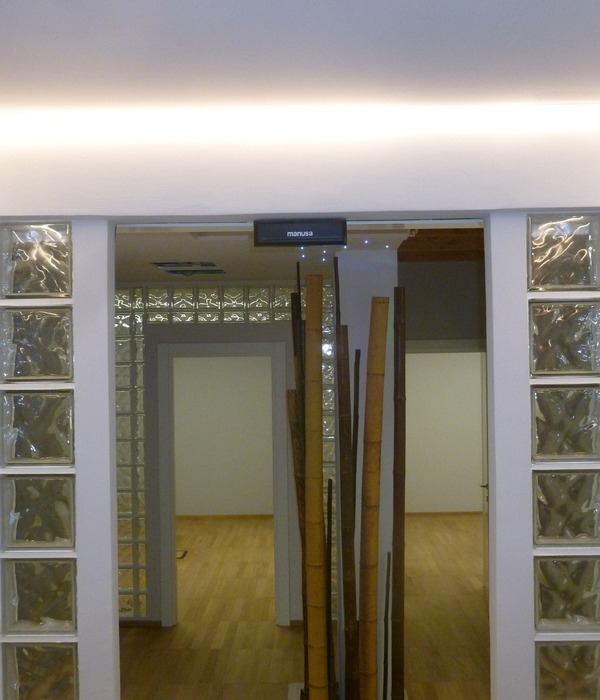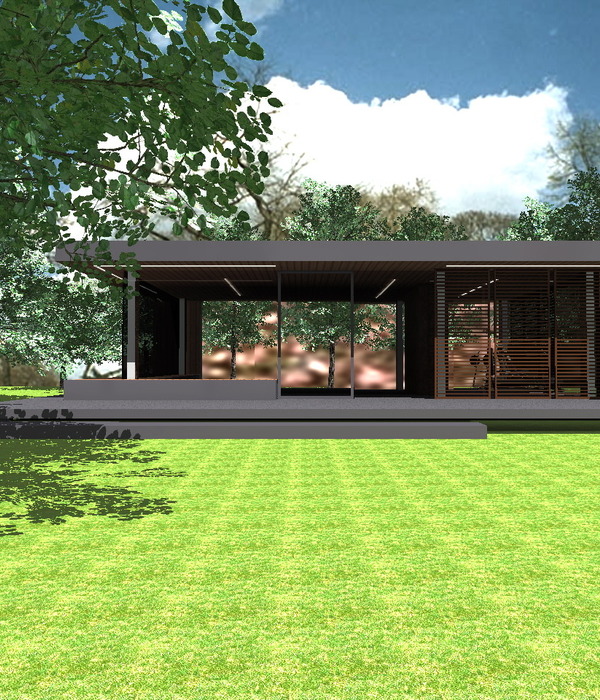The house is situated in Thanh Tam Parish,
. The idea for the design of the house was inspired by the architecture of the "traditional 3-room house" with spaces familiar to the lifestyle of Vietnamese families for hundreds of years.
Similar to the "front hall" of the traditional three-hall house, a common living space is placed on the ground floor at the entrance, next to the front orchard, and an interior courtyard in the back. This courtyard is located between the “front hall” and the “back hall” below a trellis of greens. Formally right in the middle of the common living space is an area for worship and a circular aquarium following the principles of feng shui. With a plan that is rectangular, flat and undivided, the furniture in the common living space can be arranged in a flexible way to meet the changeable usage needs over time of the family. This is a friendly space, attracting people to communicate with each other with a lot of sunlight, wind, plants, and water surface.
The private spaces of the family are designed inside 2 firm concrete structures on the first floor. These spaces are divided into lightweight materials, which can be recycled, moved easily, and transformed according to the needs of usage or when the family has any changes in the number of members. These two concrete structures are designed to be open and airy with rows of hundreds of openings on both sides in the form of "the gills of fish" to allow people in the family to easily communicate with each other but still ensure the necessary privacy. The fact that in the common space, the furniture can be arranged flexibly and the private space uses light partitions has helped the house to easily transform to suit the needs of the family of multiple generations. As a result, the concrete structure, which is the main covering and bearing component of the house, does not need to be renovated and can last over time.
“The front hall” and the “back hall” are open in two directions. They are connected by an interior courtyard, allowing sunlight and wind to reach every space. The house has thick walls and a roof which provide good insulation. Two concrete structures upstairs have hundreds of continuous openings like "the gills" to help regulate the sunlight into the house and avoid the rain. This design is very suitable for the tropical climate of Vietnam. After a year of construction, the orchard in the front and back hall of the house and the green vegetable trellis on the roof have turned into a green covering layer. This layer has contributed to creating a fresh, cool, and quiet atmosphere for the living spaces.
This enables the living spaces to take in the sun and wind all year round. The private living spaces are protected inside by the "fish gills" concrete structure and the green covering layer. They can be open all day to catch the fresh and cool breezes. The people in the house will be able to enjoy this fresh air and have a good night’s sleep to regenerate their energy. Such a healthy living space can help people overcome the pandemic. The building saves a great amount of energy. Using 11 solar panels, the family rarely has to pay for electricity.
Some birds come to eat the fruit in the vegetable garden on the roof and stay there, helping to make the family's life more interesting and happy. Planting a vegetable garden on the roof is a simple idea that is easy to transform and replicate. The architect wishes to inspire everyone to grow their vegetables at home. This not only contributes to creating a fresh and cool atmosphere but also helps to reduce climate change and ensure food security.
{{item.text_origin}}

